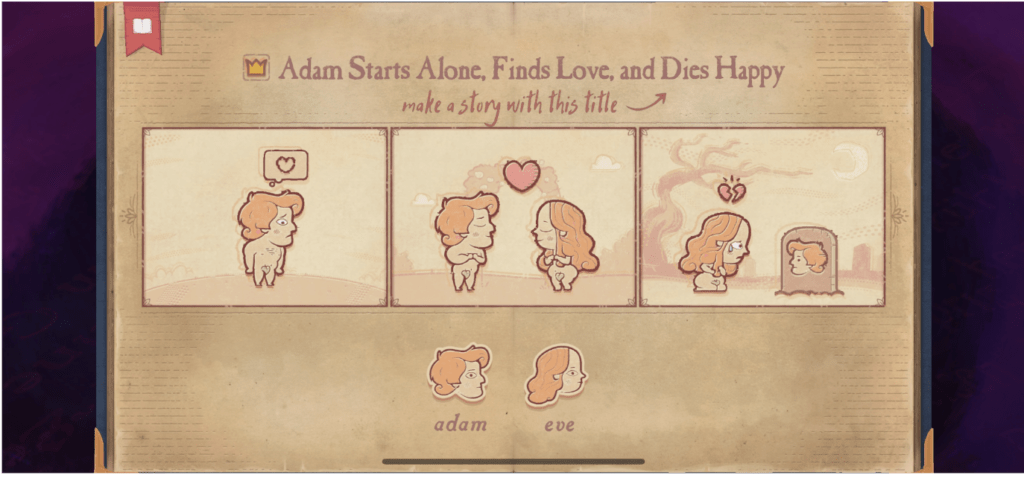This week, I decided to check out Storyteller, a game developed by Daniel Benmergui that is playable on PC via Steam, Nintendo Switch, or is available for download on the App Store and Google Play store. I think you need to be reasonably familiar with how to play puzzles to enjoy this game, which is why it is intended for audiences of 12 and above.
I’ve never played a puzzle that follows the specific mechanics of storytellers, but I really enjoyed the overall structure of the game. Each puzzle is defined by a single sentence that informs how the puzzle should be filled – the goal of the player is to create the correct progression of click and drag scenes that match the informative sentence:

If a player gets the puzzle correct, there is the immediate feedback of the crown letting the player know that they have indeed created the correct scene. Even if the player does not get a scene correct, they can move to the puzzle in the next scene, but must return to that puzzle eventually.
Overall, the mechanics of the game, such as strong character expressions and the use of illustrative backgrounds drive players to use context clues to create scenes that match the narrative they are seeking to create.
One of my favorite mechanics of the game is the emotive illustrations of the characters. At least initially, we as the player only have access to adam and eve. It is funny to see these characters illustrated as ghosts, crying, or in love, and these emotions are the clues we need to establish where each scene must go. I also thought the use of backgrounds was very clever, as the use of the love background is usually designated for happier points in the narrative arc and the use of the funeral background is designated for sad points in this arc. There are not explicit hints as to the solution of the puzzle, but the characters get a look of confusion that lets the player know that something is not quite right. I thought the use of character expression as a means of helping the player to be a really clever mechanic that added a level of enjoyable novelty to the game.
The game allows the player to try out any combination of scenes they want, but does not provide any hints. Initially, the game does not seem like it’d be overly difficult, but the difficulty does take a sharp increase at unexpected points. I did encounter a prompt that stumped me for a few moments, which I was able to eventually figure out. Due to the lack of hints, however, I felt that the game really encourages the player to pick any random assortment of backgrounds and individual characters with the hopes of cracking the correct combination. With the use of hints that take the form of an arrow, or maybe a highlighted character, the game can lessen some of the guess and check style game play that inevitably happens at a certain point, which I do think would be valuable.



